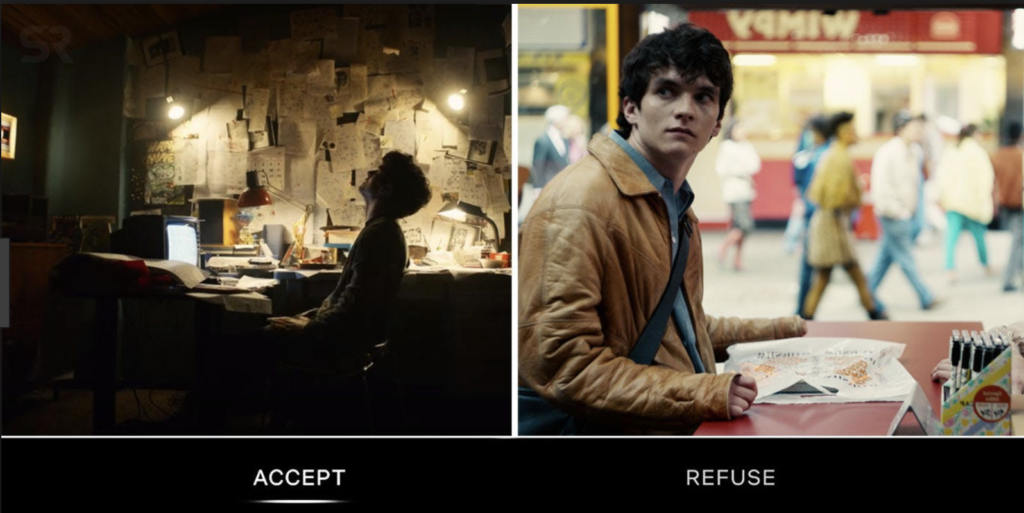This was the first interactive film that I know of, designed to be streamed alone or in a small group of people; such an experience could not have the same effect watched in a theater in a big crowd as you wouldn’t feel complicit in the choices you made with the presence of other people. The film is reminiscent of a hypertext novel, in which your decisions fork various paths. There are evidently one trillion different ways your individual film experience can go.
There isn’t too much time in between making a decision that it becomes a typical movie, but it isn’t short enough that there is no room for storytelling through the medium of film. In other ways, the speed of interaction feels just right. There is also a progression to the interactions…with each subsequent decision being more high-stakes. The player is eased into the decisions, which coupled with having enough time for the arc of character development, creates more emotional investment into the outcome they receive. If they reach a dead end, the viewer can go back in time as the whole story is about multiple threads of time and whether one is more real than the other. However, the story becomes altered just as they do. Being able to go back to the last point before it all went wrong furthers emotional investment in the interaction as the viewer becomes struck with the desire to see many, if not all, possible endings–there are evidently five possible main endings for the film, so that is a good number that it is possible to see all five in about two hours, the average length of a feature film. Each decision that the viewer makes has only two possible immediate choices, making it relatively simple for the viewer comprehend what is required for them to interact. If the film was convoluted with the ability to make a decision from even three or four or eight choices, the viewer would probably get exasperated and stop watching or make a random decision reducing the emotional investment in the decisions made.
What I loved most was that the film was really about the appearance of interaction. Though the viewer was empowered to make decisions in the course of the film, they come to the conclusion that they only have the appearance of free will, a realization whose development parallels that of the protagonist. The protagonist similarly realizes that his decisions are being controlled by none other than the viewer. Perhaps, appearance of interaction is phrasing it wrong. Because it is certainly interaction given the media’s various reactions to the choice the viewer makes. Rather, it is that your interaction appears to have consequences but you soon realize the futility of making decisions. The film also raises the theme about whether it is only through insanity that one can realize their true creative potential. From the first decision of what cereal to eat versus one of the last decisions of whether to kill your father or not, Bandersnatch is an engaging interaction. It received much criticism from Black Mirror fans and others who declared that the endings weren’t personalized enough. That is probably well-warranted if you look at it from a critical lens as a film, but as a medium, it raised so many questions about how an interaction is designed to give you the appearance of free will…with other forms of media, the artist usually has an intended interaction for the viewer; there is a specificity to the interaction. It also makes the viewer wonder whether this will change the way that we watch on our screens and the dangers that may come from that in terms of what data is collected from us…when we interact with something, is our interaction a form of input? What could be gleaned by it? And by who?
